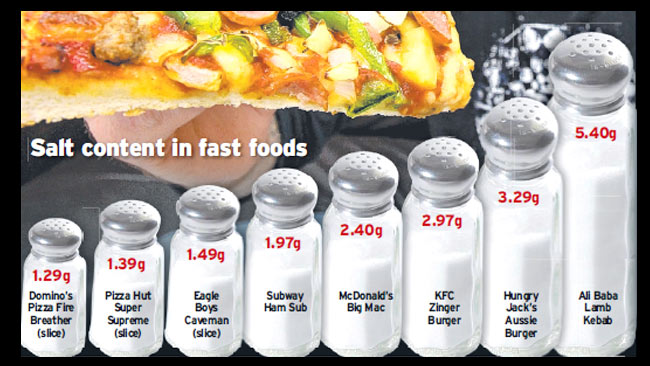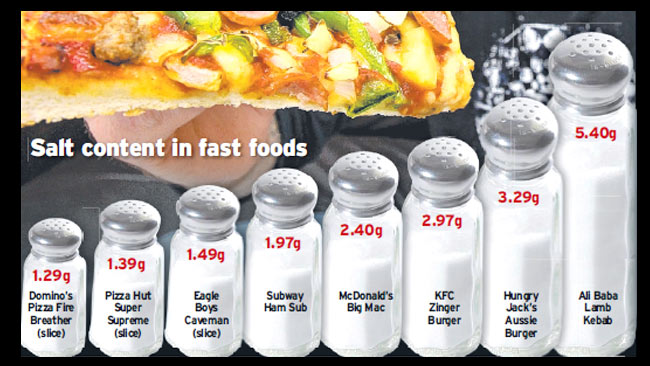
Salt, Sodium and Your Health
Though we use “salt” and “sodium” as if the two words were interchangeable, there is a difference. Table salt is actually sodium chloride or NaCl.
Sodium is used to transmit nerve impulses and is found in every cell of your body. The balance between sodium and other ions regulates the pressure of cells and is related to your blood pressure. About 40% of the amount of salt by weight comes from sodium.
There is strong evidence that links our current salt intakes to high blood pressure, the main cause of strokes and a major cause of heart attack, which are the most common causes of death and illness in the world. A high salt diet is linked to other conditions, cancer of the stomach, kidney disease, kidney stones, obesity and exacerbating the symptoms of asthma, Meniere’s Disease, Alzheimer’s Disease and Diabetes. Excess salt is also related to osteoporosis. Excess salt increases your need for calcium so it gets pulled from the stored sources like bones and teeth. Salt is also related to GERD and congestive heart failure. This and more at World Action Salt.
What about children?
There is now evidence to show that a high salt intake in children also influences blood pressure and may predispose them to the development of a number of diseases including: high blood pressure, osteoporosis, respiratory illnesses such as asthma, stomach cancer and obesity. Kids under one year need about 1,000 mg (1 gram) per day based on IOM recommendations.
However, reducing the sodium intake in the US remains difficult,
in part because 75% of sodium
in the average American diet comes from packaged,
processed, or restaurant food.
Notice that the picture below shows salt in grams, that is 1,000 mg!!!!! Now read on to see how much salt you should eat.
How Much Should You Eat?
Twenty-three hundred (2,300) milligrams is the highest level considered acceptable by the National High Blood Pressure Education Program. The 1,500 milligram level can lower blood pressure even further and, more recently is the amount recommended by the Institute of Medicine as an adequate intake level and one that most people should try to achieve. The lower limit for adequate system function is about 500 mg per day.
Whole natural foods straight from the garden will provide around 300-500 mgs of sodium per day. This leaves 1,000 – 1,200 mg/day to still be within the recommended 1,500 mg/day and to 1,800 – 2,000 mg to be under the upper limit. With no added salt coming from anywhere else, this leaves most people the ability to add around 1/2 to 3/4 tsp a day without increasing their risks.
Watch out for the usual high-sodium sources: cured meats; frozen or boxed entrées; frozen and canned vegetables; fast foods; sauces and salad dressings. Sodium also hides in unexpected places. For example, cottage cheese can contain almost 1,000mg per cup. Read labels to find good choices.
The Best Way to Control Salt Intake
You were wondering about enjoying the taste of your food, right?
There are two important factors here.
The re-calibration of taste buds
Gradually reduce the salt you cook with and ask the chef to cook your dishes with no added salt. Bring your own favorite natural sea salt to sprinkle on the food and you will get the taste you are looking for. Do NOT trust the restaurant to use unprocessed, bleached, refined and added-to salt. Iodized “When It Rains, It Pours” is not good for you. For more on the minerals in sea salt check this article from CureZone.
The human sensory system has the ability to adapt
In other words, you get used to something and it does not seem as intense as it did when your brain initially detected it. Sensory adaptation permits a living creature (human, animal, plant, microorganism) to find balance with its surroundings and efficiently respond to changes in stimuli.
So when you eat more salt, you continue to need more salt to notice the taste. This is part of The Pleasure Trap stimulus. More on that coming up.

Leave a Reply